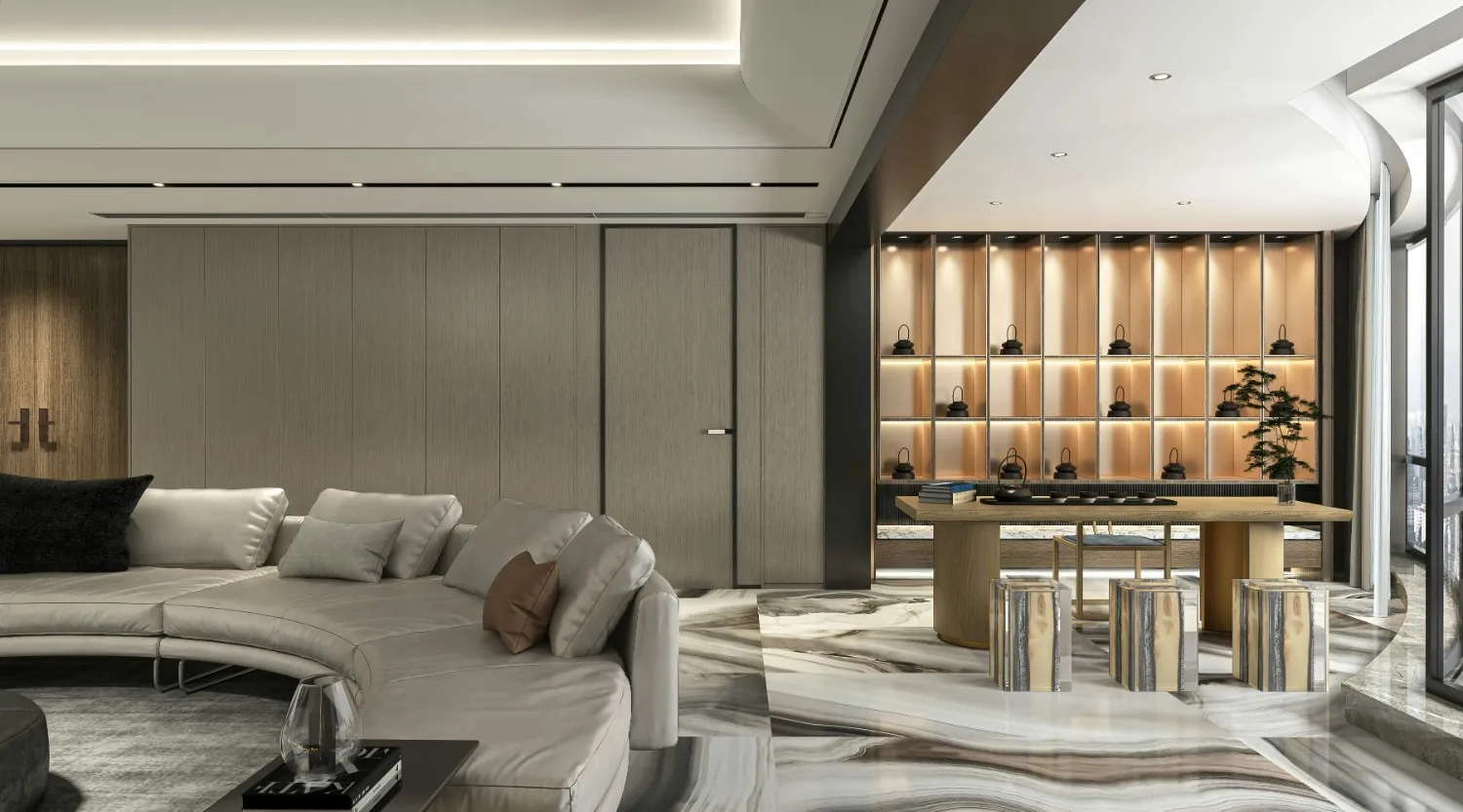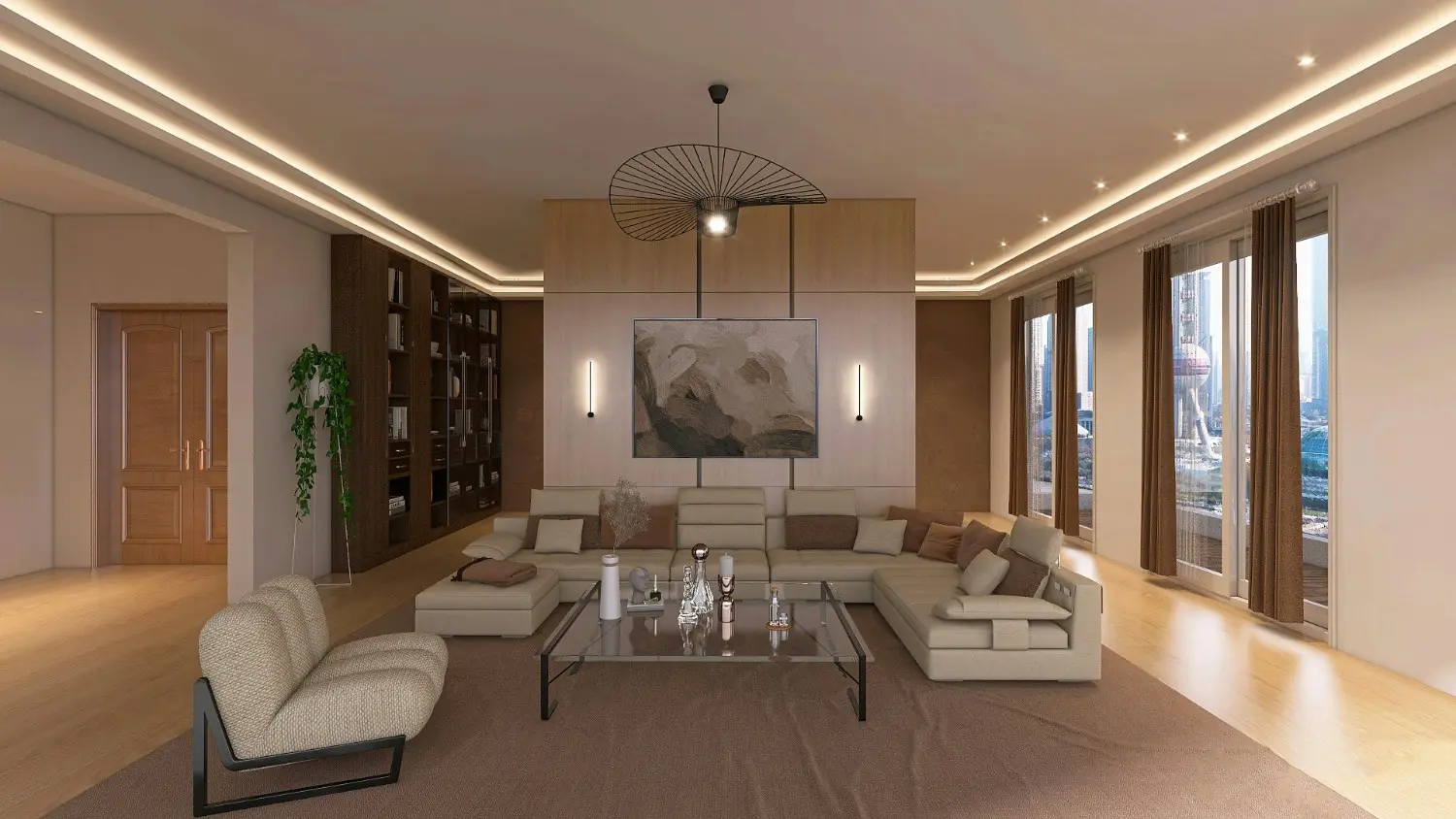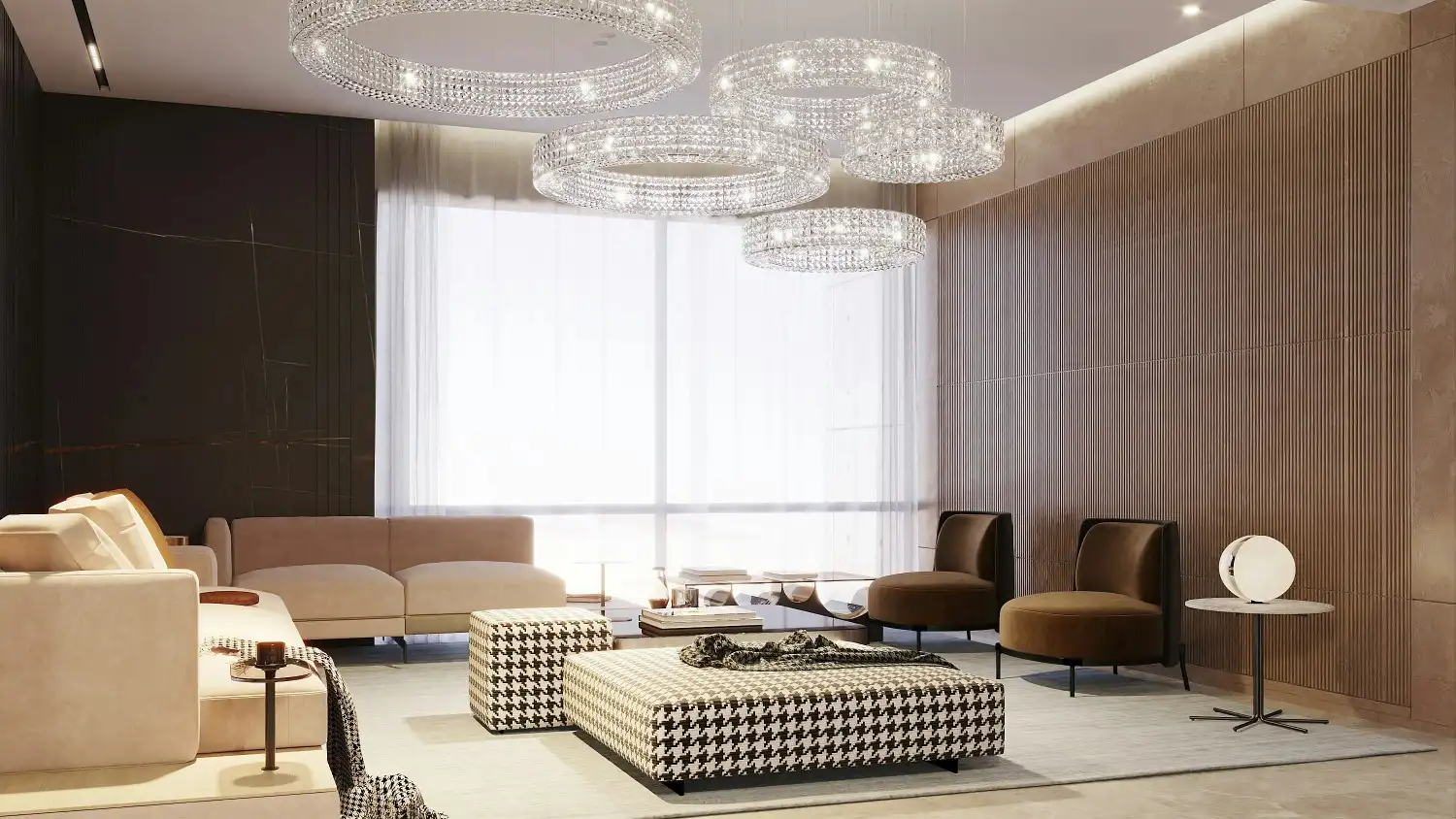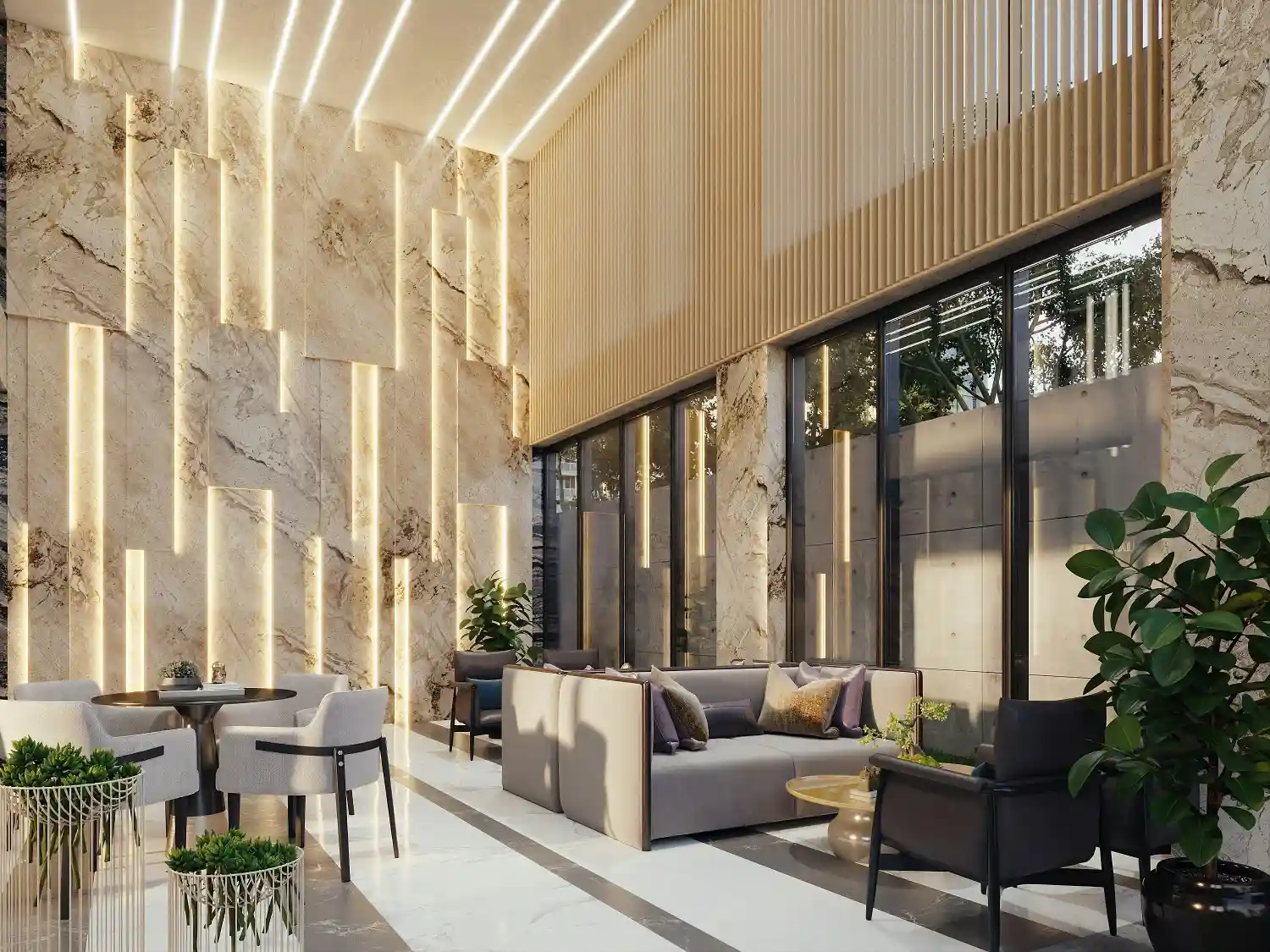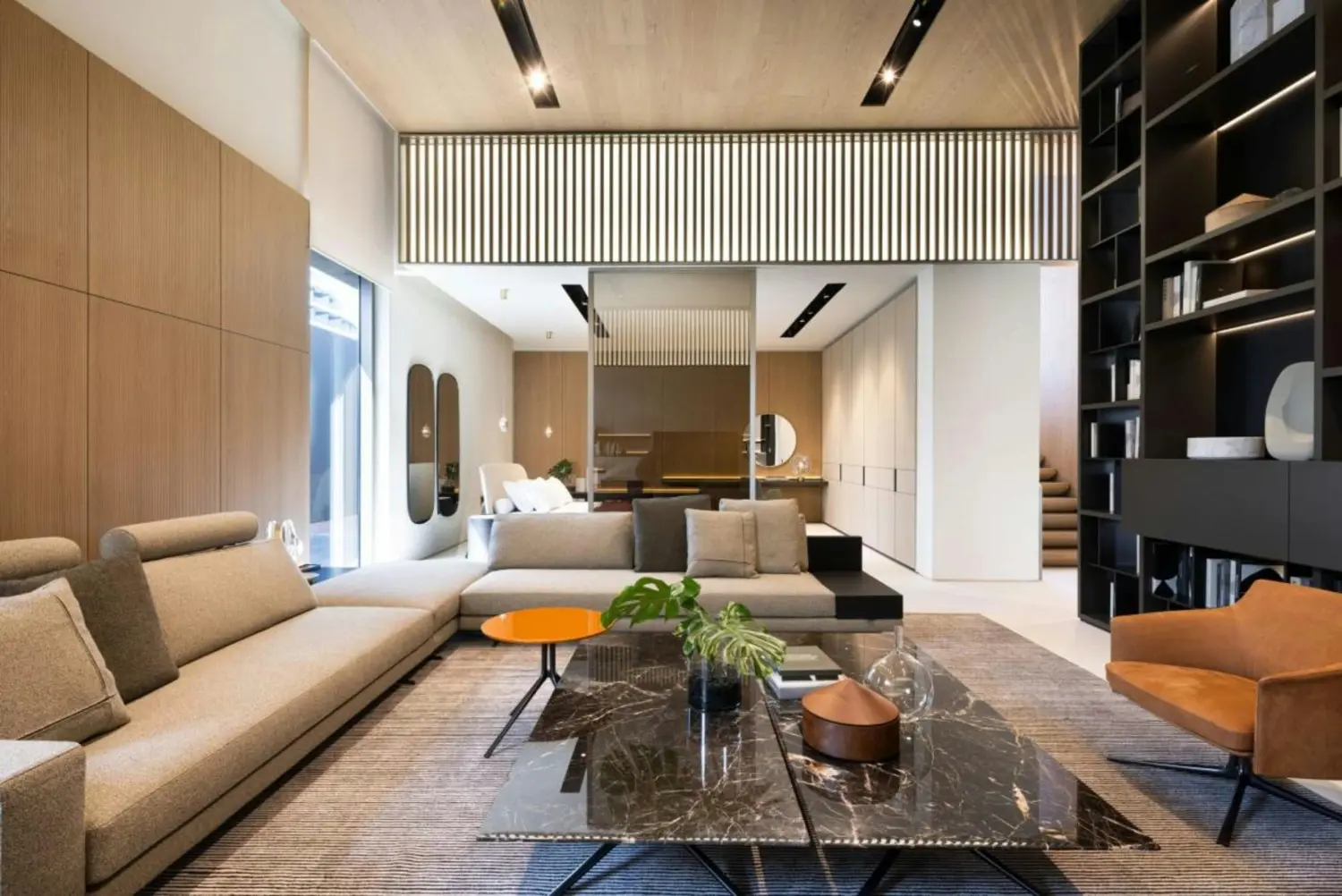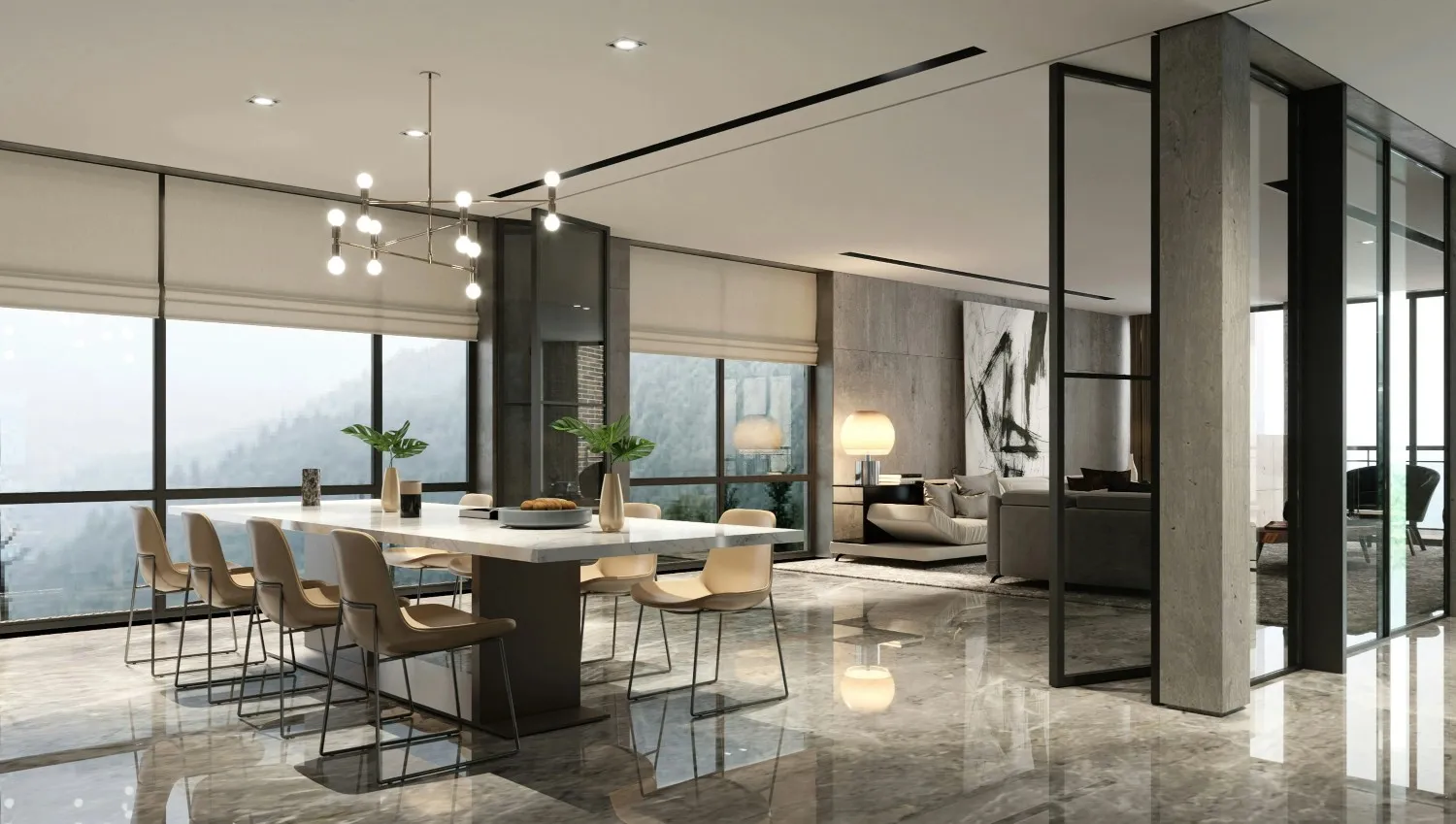A relaxing spa isn’t just about the treatments. It starts with the space itself. The right spa room decor ideas can turn any corner into a sanctuary that calms the mind and restores balance. This guide from Ark & Mason shares simple ways to design a spa environment that feels both beautiful and deeply restorative.
Highlights
- The right color, light, and textures change how people feel in a space.
- Nature-inspired elements and scent go beyond looks, they engage the senses.
- Minimal, well-planned design keeps the space calm, not chaotic.
Why Spa Room Decor Shapes the Experience
A spa room is more than its treatments. Every wall color, sound, and scent contributes to how clients feel. Research shows that when a room looks cluttered or visually crowded, people’s stress hormones increase. Adults, especially women, who live in homes with more visual clutter often have cortisol levels linked to ongoing stress. This means that messy or overly busy spaces can make it harder to relax even before a spa treatment starts.
A cluttered setup, harsh lighting, or jarring art can quickly break the calm. On the other hand, even simple scents can help. Studies show that inhaling lavender and similar essential oils noticeably lowers anxiety compared with control groups.
Good design invites stillness. It helps clients unwind without even realizing why. A balanced layout can make small rooms feel more spacious and turn large ones into intimate retreats. Clean lines, soft materials, and natural light all play a part.
Well-thought-out spa room decor doesn’t just soothe guests, it inspires loyalty. When clients associate your space with peace, they remember it and return.
The Foundation of a Relaxing Spa Space
Spaces that include natural views, plants, and textures tend to make people feel and perform better. In a global study of 7,600 participants, environments with natural elements were linked to 15% higher well-being and 6% higher productivity. Every relaxing spa begins with two things: color and nature.
- Calming colors: Soft neutrals like cream, sage, and light gray make a room feel balanced. These tones reflect light gently, keeping the energy low and warm.
- Natural materials: Stone, bamboo, and wood ground the space. Greenery adds life and movement. Even a small potted plant can shift the atmosphere.
Combine these with subtle texture, linen curtains, woven mats, and smooth stone finishes, to bring a tactile sense of calm.
See more: Top 10 Convenience Store Interior Design Ideas That Attract Shoppers
10 Best Spa Room Decor Ideas
Each detail in a spa shapes how people feel. These spa room decor ideas bring together color, texture, and sensory design to create an atmosphere that truly restores calm.
1. Calming Color Palette
Color is the foundation of every spa’s atmosphere. Soft neutrals like beige, ivory, and sand evoke warmth and safety, while muted tones of green and blue connect guests with nature.
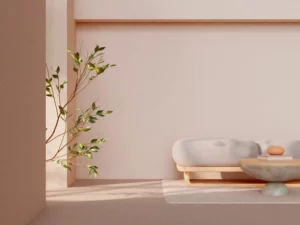
- For smaller or windowless spaces, consider warm undertones like clay, soft taupe, or mushroom grey to mimic the glow of daylight.
- Limit contrasting hues—too much variation can overstimulate the senses.
- Matte finishes and diffused lighting help colors stay gentle on the eyes, sustaining a relaxed mood throughout the visit.
2. Natural Elements Indoors
Biophilic design—integrating nature into interiors—anchors the spa experience in calm and renewal.
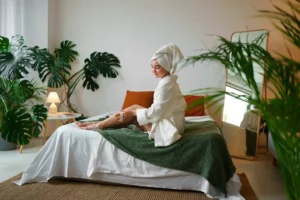
- Introduce wooden textures, stone details, bamboo panels, and woven fibers for tactile warmth.
- Include plants, moss walls, or mini bonsai gardens to purify the air and restore a sense of natural connection.
- If real plants are impractical, high-quality preserved arrangements maintain freshness with no upkeep.
Nature softens hard surfaces and reconnects the senses with organic rhythms, the essence of restorative spa interior design.
3. Layered Lighting
Lighting shapes emotion and functionality simultaneously. A successful spa uses layered lighting to create flexibility:
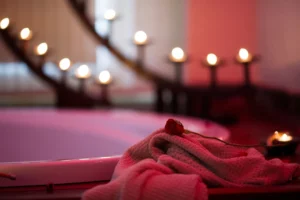
- Ambient lighting from recessed or diffused sources establishes a warm base.
- Accent lights highlight feature walls, art, or textured materials.
- Task lighting supports precision for therapists without disrupting serenity.
- Add dimmers and smart controls so staff can adjust intensity for each treatment type.
Concealed LED strips behind mirrors or shelving enhance glow without glare, turning illumination into part of the decor.
4. Soft Textiles & Comfort Layers
Texture is touch translated into comfort. Soft layers turn sterile rooms into nurturing retreats.

- Use plush towels, thick robes, linen curtains, and velvet or cotton upholstery.
- Add area rugs with deep pile to buffer sound and soften each step.
- Keep a consistent textile palette for visual harmony—avoid shiny or overly synthetic fabrics.
Every texture should invite contact and relaxation, making guests instinctively slow down.
5. Minimal & Clutter-Free Layout
Simplicity is the ultimate luxury. Clean layouts minimize distractions and amplify the sense of calm.
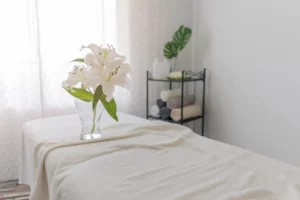
- Incorporate built-in cabinetry, hidden shelving, or woven baskets to store products discreetly.
- Keep surfaces clear except for carefully arranged essentials like candles or small plants.
- Use symmetry and open circulation paths to promote order and easy cleaning.
Minimalism doesn’t mean emptiness—it means designing space that breathes. A clutter-free environment supports mental clarity for both guests and staff.
6. Artwork & Visual Calm
Art sets tone and storytelling. Choose imagery that reinforces peace, not stimulation.
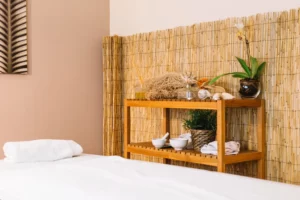
- Opt for botanical prints, gentle abstract forms, or nature photography.
- Large murals of misty forests, ocean horizons, or mountain silhouettes expand perceived space.
- Stick to a limited palette—art should blend into the architecture, not compete with it.
Visual calm fosters inner stillness, helping visitors settle into the present moment.
7. Sound & Water Features
Sound completes the sensory equation. The right auditory environment masks urban noise and deepens calm.
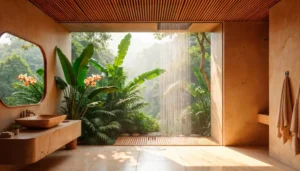
- Install tabletop fountains or wall-mounted waterfalls to add gentle movement and humidity.
- Play ambient nature sounds, soft instrumental music, or guided breathing tracks at low volume.
- Use acoustic panels or fabric finishes to absorb excess noise and prevent echoes.
This layering of sound ensures the space feels alive yet still—an auditory cue that signals the mind to unwind.
8. Aromatherapy & Fragrance
Fragrance influences emotion faster than any visual cue. A signature scent becomes part of your brand memory.
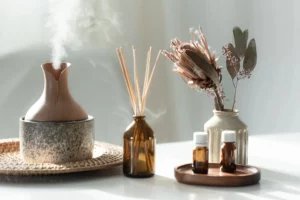
- Choose essential oils like lavender for relaxation, eucalyptus for clarity, or sandalwood for grounding.
- Use diffusers, candles, or discreet mist systems with controllable intensity.
- Rotate scents seasonally—citrus and mint in summer, vanilla and cedar in winter.
Keep the aroma subtle; guests should notice freshness, not perfume. The goal is balance, not saturation.
9. Privacy & Gentle Partitions
Privacy fosters comfort and emotional safety. Even in shared spaces, boundaries can feel soft and inviting.

- Divide areas with sheer curtains, bamboo panels, or frosted glass to diffuse light and sound.
- Maintain clear sightlines for staff supervision without compromising intimacy.
- Add sound-absorbing materials between treatment zones to prevent voice carryover.
This combination ensures guests feel both connected and protected—an essential quality in spa environments.
10. Refreshment & Self-Care Corner
A thoughtful finishing touch reinforces care beyond treatments.
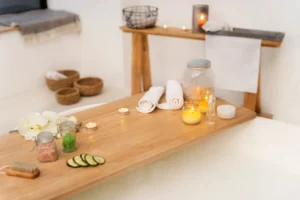
- Create a refreshment station with herbal teas, fruit-infused water, and cool towels.
- Offer skincare testers, aromatherapy mists, or mindfulness cards for guests to take home.
- For home spas, a tray of candles, oils, and accessories personalizes the ritual.
This corner extends the spa’s purpose—transforming a visit into a wellness journey that lingers beyond the room.
Watch more: Top 10 Spa Interior Design Ideas That Inspire Relaxation
Designing Spa Spaces with Ark & Mason
At Ark & Mason, we believe spa design is both an art and a discipline — where every curve, color, and connection between rooms supports the rhythm of relaxation. Our team unites interior design expertise with hands-on construction management, creating spa environments that not only look serene but also function seamlessly for therapists, guests, and operators alike. From first sketches to final finishes, we handle each phase with precision, clarity, and care.
A Clear, Collaborative Process
Each project begins with a discovery session to understand your brand, treatments, and guest flow. We translate that into mood boards, material palettes, and 3D renderings so you can see and refine your vision early. Our documentation includes detailed millwork drawings, specifications, and permit-ready plans, ensuring contractors build exactly what’s intended.
We coordinate vendors, engineers, and trades to keep projects predictable, on time, and stress-free. This structure brings calm not only to your guests but to your build process.
Where Wellness Meets Commercial Design
While our commercial interior design services span offices, gyms, and hospitality, spa environments hold a special place. We combine sensory design with durability—materials that handle humidity, lighting that soothes, and layouts that keep privacy intact. Each project balances care, calm, and precision, turning design into a measurable advantage for owners and staff alike.
Examples of Our Work
- Headicure Head Spa (Vancouver): Warm wood, soft arches, and adaptable rooms create an environment that unwinds guests instantly.
- Meraki Beauty Bar (Burnaby): A busy salon transformed into a serene retreat of blush tones, layered textures, and acoustic comfort.
Clients describe our approach as collaborative and detailed, with no decision left unresolved. Whether boutique head spa, massage studio, or wellness clinic, our goal is to make design and construction feel as restorative as the spaces we create.
If you’re planning a spa or wellness renovation, explore how Ark & Mason’s integrated commercial interior design services can bring your vision to life — beautifully, efficiently, and without stress.
FAQs: Spa Room Decor Ideas
1. What colors work best for spa room decor?
Soft neutrals and muted greens help calm the mind. Beige, ivory, sage, and light gray work beautifully with natural textures.
2. How do I make a small spa room feel more spacious?
Keep the color palette light, use mirrors to reflect light, and limit furniture to what’s functional. Clean lines and vertical design elements also expand the feel of tight spaces.
3. What are affordable spa room decor ideas I can start with?
Start small: add plants, switch to soft lighting, use linen curtains, or include an oil diffuser. Even simple changes can make a noticeable difference.
4. How important is scent in a spa environment?
Extremely. Scent connects directly to relaxation and memory. A mild, consistent aroma helps clients associate your spa with calm.
5. Can spa room decor ideas work for both home and professional spaces?
Yes. The same principles apply. Focus on comfort, simplicity, and sensory detail. Adjust scale and materials to suit the space.
Conclusion
True relaxation starts long before a massage or facial, it starts the moment someone steps into a space designed with intention. The best spa room decor ideas blend calm colors, texture, scent, and light to create an experience, not just a room. Ark & Mason has shaped some of Vancouver’s most tranquil wellness interiors by uniting design and construction in one seamless process. If you’re ready to build a spa that looks refined and feels restorative, contact us today.

